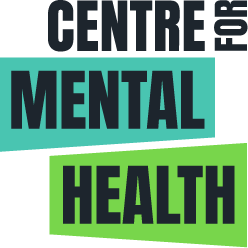Today the latest annual report from the National Confidential Inquiry on Suicide and Homicide by People with Mental Illness was published. The report explores data collected over a ten year period (2005-2015) in order to learn lessons from the tragic losses of life behind each case and enhance safety in future.
This year’s report shows that the number of both suicides and homicides by people in contact with mental health services has been falling consistently for a number of years, even though services have been working with more people during that time. This is a significant achievement by mental health services in the context of a long-term reduction in the number of adult acute inpatient beds and fluctuations in the availability of community services for people with a severe mental illness in England.
The report notes that the number of suicides among people in psychiatric inpatient wards is falling, although the rate of reduction is now slowing down, indicating the need to maintain efforts to reduce loss of life through improved safety. With bed occupancy rates in acute inpatient wards now at 94%, staff vacancy and sickness rates higher than most others parts of the NHS and recent reports of a rise in violent incidents, this can be a challenging environment to work or stay in.
With bed occupancy rates in acute inpatient wards now at 94%, staff vacancy and sickness rates higher than most others parts of the NHS and recent reports of a rise in violent incidents, this can be a challenging environment to work or stay in.
The number of suicides among people recently discharged from hospital is also falling, but the first few days after leaving hospital continue to be a very high risk time. Our recent analysis of NHS Benchmarking Network data between 2012 and 2016 found that overall community service provision reduced slightly during that time, albeit with a rise, which we hope will be sustained, in more recent years in the provision of crisis resolution and home treatment (CRHT) and early intervention in psychosis (EIP) services. The recent reduction in suicides among people leaving hospital may suggest that CRHT teams are now better able to support people to prepare for discharge and when they return home: an essential yet sometimes forgotten part of the role of CRHT teams.
The report reinforces the increased risk of being admitted to hospital out of area. There is now a welcome move to reduce the use of out of area placements for people needing acute mental health care as part of the Five Year Forward View for Mental Health. We recently reviewed CQC data about ‘locked rehabilitation’ services and found worrying evidence of a significant minority of people spending long periods (years in some cases) in out-of-area rehabilitation beds. It is therefore vital that efforts to reduce out of area placements for acute care are extended to people in rehabilitation services: that they are not forgotten in this important process.
Some groups of people are already known to have a higher than average risk of suicide – for example those with a diagnosis of depression or schizophrenia. The report also identifies people with eating disorders and those with autism as facing a higher risk, and in each case those who have self-harmed previously are particularly at risk and should therefore be a priority for help and support.
The report identifies people with eating disorders and those with autism as facing a higher risk
Drugs and alcohol are also known to be major risk factors for suicide among people using mental health services. Recent years have seen widespread and swathing cuts to alcohol and drug services, and people with ‘dual diagnosis’ have for many years experienced difficulties getting effective help. We are now working with the Institute of Alcohol Studies to investigate this issue and will publish the report of a recent survey early in 2018.
While suicides among people using mental health services are falling, the rate among prisoners grew to record levels last year, and we are concerned that recently released prisoners face a high risk of suicide, too. We need to apply the lessons that have been learned in the NHS to the criminal justice system: both inside prisons and on the outside. Liaison and diversion will help to prevent many people with a mental health difficulty being sent to prison but we need whole system change in prisons and probation to bring down the suicide rate and make safety and wellbeing more of a priority throughout the justice system.
Reducing the risk of suicides among mental health service users will require effective partnerships between NHS and local government (social care, public health and housing). Local authorities have a key role in preventing out of area placements, providing drug and alcohol services, facilitating safe and timely discharge and ensuring people’s social as well as clinical needs are met. Only by working hand in hand, and in partnership with service users and families, will the NHS and local authorities prevent tragic losses of life among people using mental health services.


